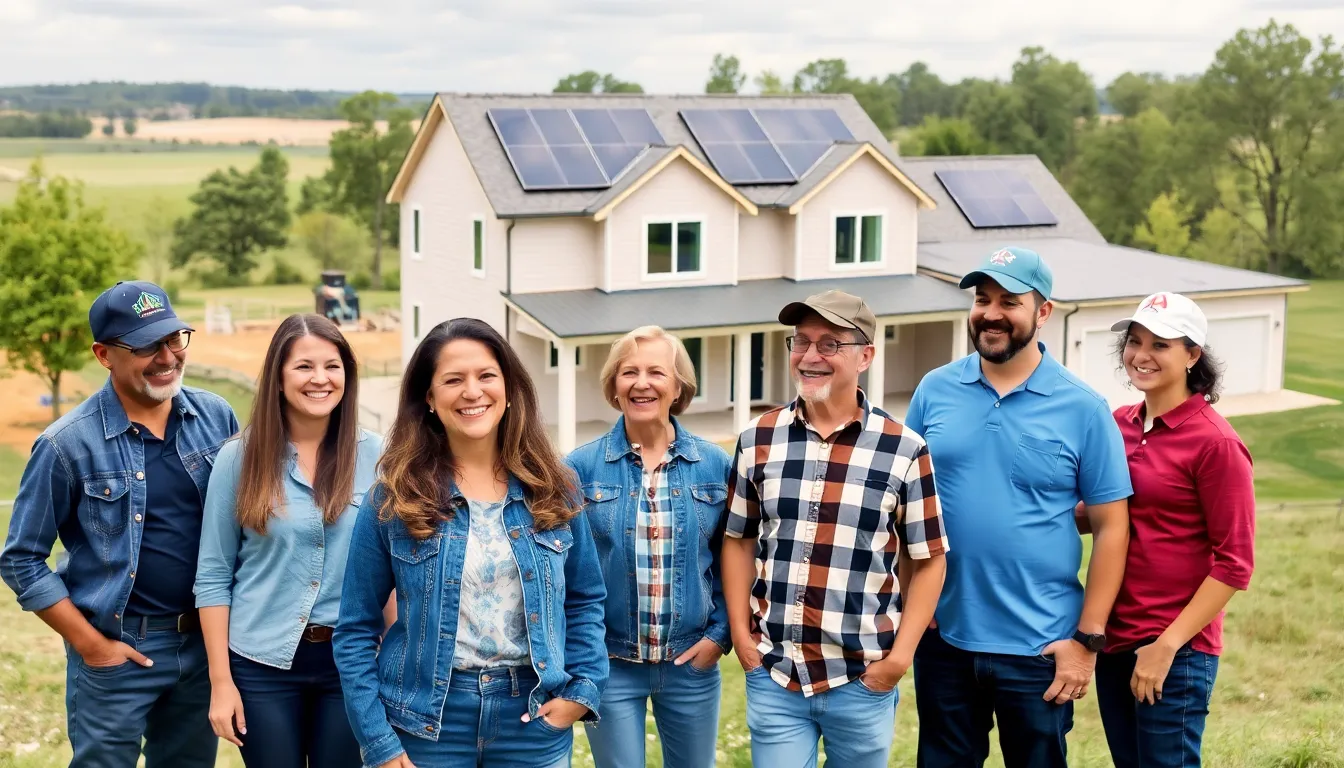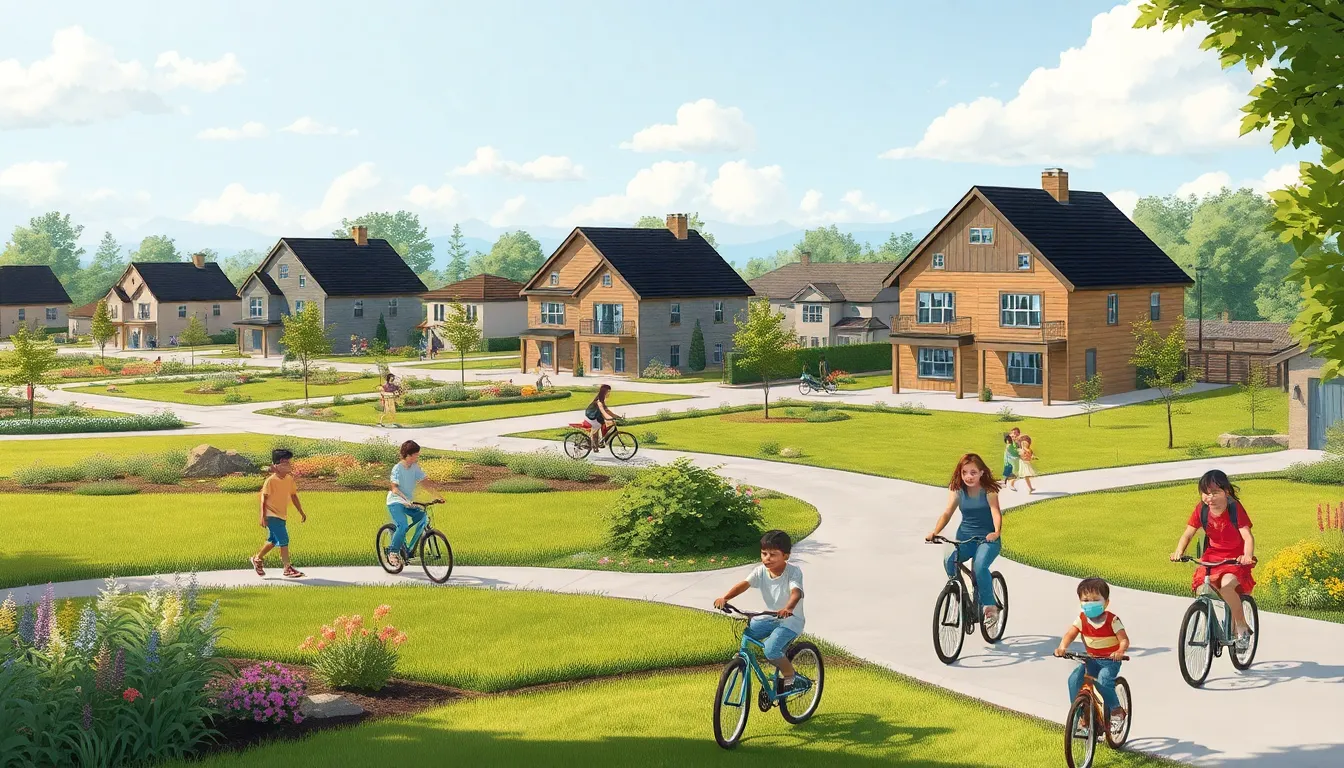Phone:
(701)814-6992
Physical address:
6296 Donnelly Plaza
Ratkeville, Bahamas.

In a world where urban sprawl seems to be the name of the game, rural housing development is the underdog ready to take center stage. Imagine trading the hustle and bustle of city life for fresh air, open spaces, and a community that actually knows your name. It’s not just a dream; it’s a growing reality that’s catching the eye of savvy homebuyers and developers alike.
Rural housing development encompasses the design, construction, and enhancement of residences in non-urban areas. This trend offers numerous advantages, making rural living increasingly attractive. Fresh air and open spaces contribute to a healthier lifestyle. A close-knit community enhances social ties, fostering a supportive environment for residents.
Rural areas often provide substantial property value compared to urban settings. Homebuyers find more affordable housing options, with larger lots and diverse architectural styles. This accessibility appeals greatly to families, retirees, and young professionals seeking a quieter lifestyle.
Developers focus on creating sustainable communities that accommodate modern needs. Green building practices are often prioritized to ensure long-term environmental health. Communities may include eco-friendly features such as energy-efficient appliances and solar panels. These considerations attract buyers who value sustainability.
Local governments encourage rural housing development through incentives and grants. Programs exist to support infrastructure improvements, such as roads, water supplies, and broadband access. Investment in these services enhances the appeal of rural living.
Demographic shifts contribute to this trend, as more individuals seek alternatives to urban environments. Remote work opportunities promote relocation to rural areas, allowing residents to balance lifestyle and career aspirations. Various factors, combined with growing interest in rural housing options, continue to shape the landscape of rural development.
Ultimately, rural housing development represents a shift toward embracing the benefits of country living while meeting contemporary residential demands.

Rural housing development plays a crucial role in revitalizing communities and enhancing quality of life. This trend brings economic and social advantages, making it an appealing choice for many.
Rural housing development stimulates local economies by creating jobs in construction and related industries. Increased population in rural areas boosts demand for services, benefiting local businesses and schools. Affordable housing prices in these regions lead to higher rates of homeownership, contributing to community stability. Local governments often provide incentives for developers, further lowering costs and attracting investments. According to recent studies, rural development projects can increase property values by 10-20%, which brings direct financial benefits to homeowners and municipalities alike. Increased tax revenues from improved properties support essential community services, resulting in a well-rounded economic enhancement.
Rural housing development fosters stronger community ties through improved social infrastructure. Enhanced residential areas attract families seeking safe, friendly environments, promoting a sense of belonging. Communities benefit from diverse recreational facilities and public spaces that enhance residents’ quality of life. Furthermore, rural housing initiatives often include provisions for accessible healthcare and educational facilities, ensuring residents’ needs are met. Improved housing options encourage younger generations to stay in or return to rural areas, preserving cultural heritage and community identity. By investing in rural living, communities actively shape a healthier, more engaged population that values collaboration and support.
Rural housing development faces several challenges that impact its growth potential. These obstacles include infrastructure issues and regulatory barriers that can hinder progress.
Infrastructure deficiencies frequently plague rural areas. Limited access to reliable transportation, water, and sewage systems complicates new housing developments. Many rural communities struggle with insufficient broadband access, which affects remote work feasibility. Developers often face higher costs for upgrading existing infrastructure, making projects less appealing. Local governments occasionally lack the funds required for necessary improvements, delaying development timelines. Without addressing these infrastructure challenges, attracting new residents remains difficult.
Regulatory complexities create additional hurdles for rural housing development. Zoning laws can restrict the types of residences permitted in particular areas. Developers frequently encounter lengthy permitting processes that can stall projects for months or even years. State and local regulations vary significantly, adding layers of confusion for those unfamiliar with the legal landscape. Compliance with environmental regulations can also pose challenges, as developers must balance construction needs with conservation efforts. These regulatory barriers reduce the attractiveness of developing rural housing, limiting growth opportunities.
Successful rural housing development relies on community involvement and sustainable approaches.
Engaging the community during the planning stages ensures developers meet residents’ needs. Local input creates a sense of ownership among residents, fostering a collaborative spirit. Town hall meetings and surveys encourage feedback and enhance transparency. Developers benefit from understanding the unique characteristics of the area. Active participation builds trust, ensuring projects align with community values and goals. When residents help shape their neighborhoods, the result often includes stronger social bonds and increased project support.
Implementing sustainable practices in rural housing attracts environmentally conscious buyers. Developers can incorporate energy-efficient designs and renewable energy sources. Installing solar panels and using recycled materials reduces environmental footprints. Green spaces and sustainable landscaping enhance property appeal and serve community needs. Prioritizing sustainable methods lowers long-term operational costs for homeowners. Overall, these practices contribute to healthier living environments, promoting well-being among residents while respecting the natural landscape.
Rural housing development showcases numerous successful projects that illustrate the potential of non-urban living. One significant example is the Greenfield Project in Vermont, which prioritized sustainable building practices. This initiative includes energy-efficient homes equipped with solar panels, enhancing both affordability and environmental impact.
Another notable case is the Lakeside Housing Development in Indiana, focused on attracting families. The project features spacious lots, outdoor recreational areas, and community gardens. Residents enjoy increased property values, with reports indicating a 15% rise since development began.
In North Carolina, the Hope Valley community highlights the importance of accessibility. The project includes accessible infrastructure for transportation, ensuring residents can commute easily. Local officials also invested in broadband expansion, enhancing remote work opportunities.
Studies demonstrate that regions embracing rural housing development often experience economic revitalization. The town of Mill Creek implemented a program offering grants for local businesses, fostering job creation. Such initiatives have boosted entrepreneurship, improving overall community stability.
Furthermore, the Harmony Heights Project in Texas underscores social benefits. This development integrates family-friendly amenities, including parks and schools, promoting stronger community ties. Residents actively participate in planning, further enhancing community engagement.
Challenges persist, as observed in the remote development in Wyoming. Infrastructure gaps often complicate project success. Limited access to essential services remains a barrier for developers pursuing new housing opportunities.
Nevertheless, these case studies reflect the diverse strategies and positive outcomes achieved through rural housing development. Success stories indicate that prioritizing sustainable practices, community involvement, and infrastructure investment fosters vibrant rural communities.
Rural housing development presents a promising opportunity for individuals seeking a balanced lifestyle away from urban chaos. With its emphasis on sustainability and community engagement, this trend not only revitalizes rural areas but also enriches the lives of residents. The ongoing shift towards remote work and the desire for open spaces further amplify the appeal of these developments.
As local governments continue to support infrastructure improvements and developers embrace innovative building practices, rural living is becoming an increasingly viable option for many. The combination of affordability, community ties, and enhanced amenities creates a unique environment that fosters growth and stability. Ultimately, rural housing development is paving the way for a brighter future in these communities.